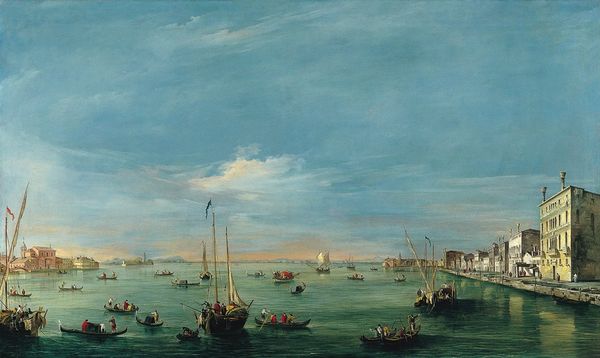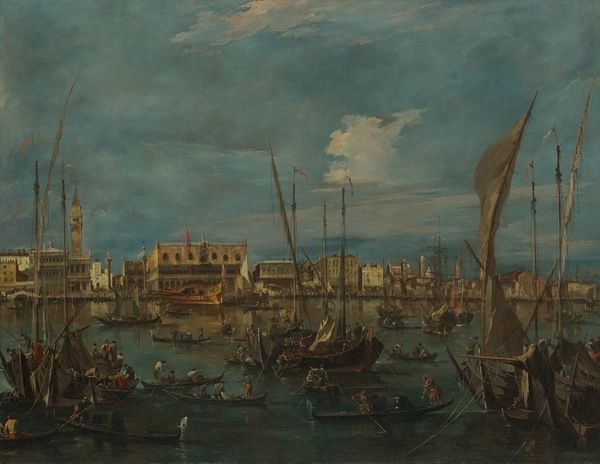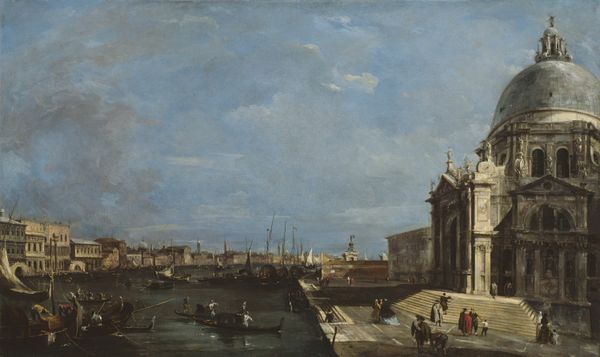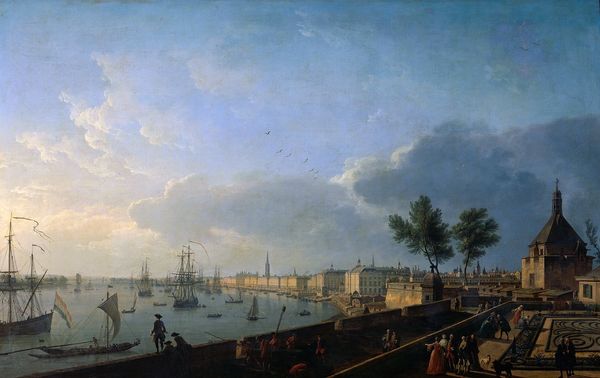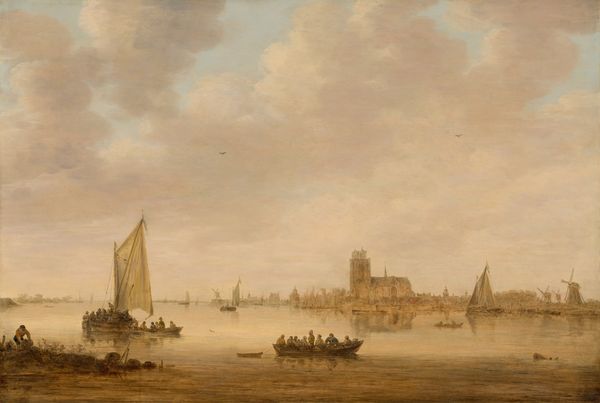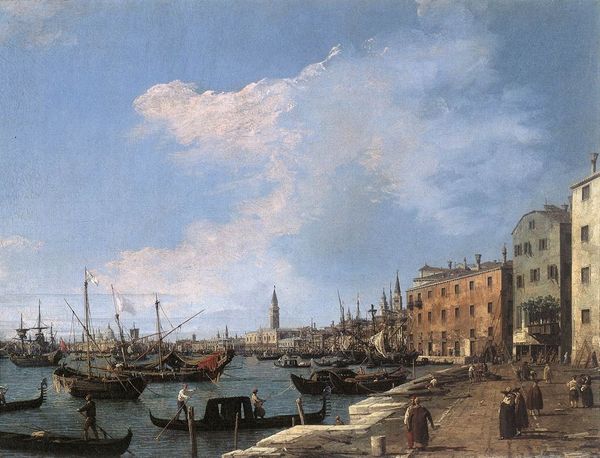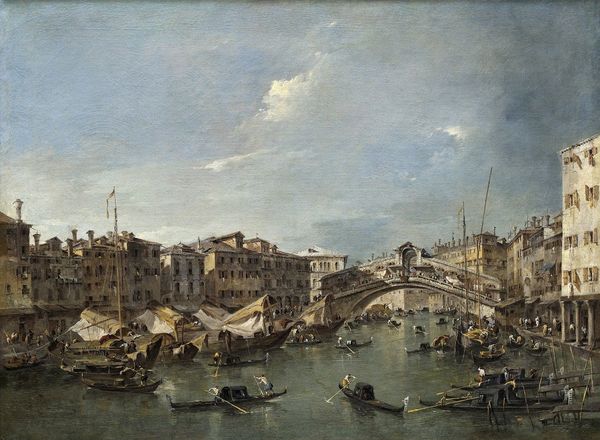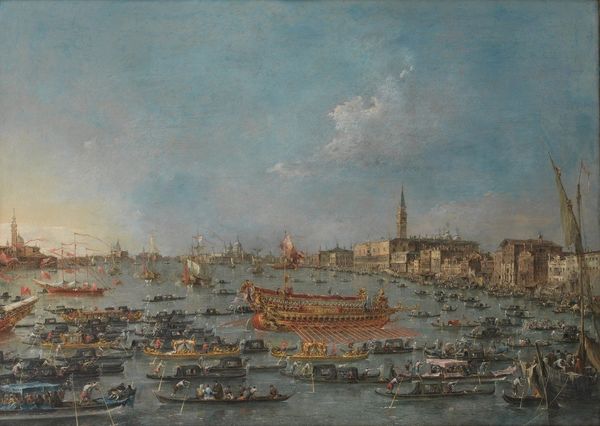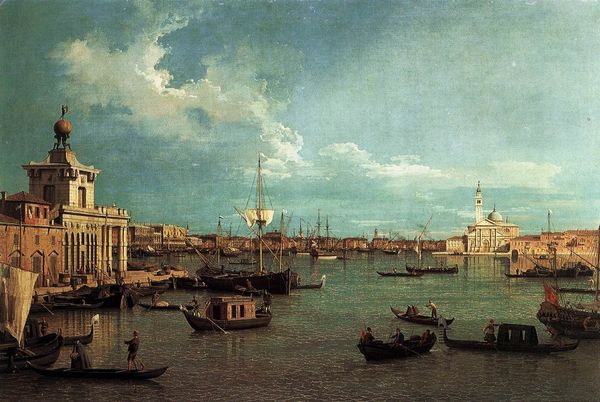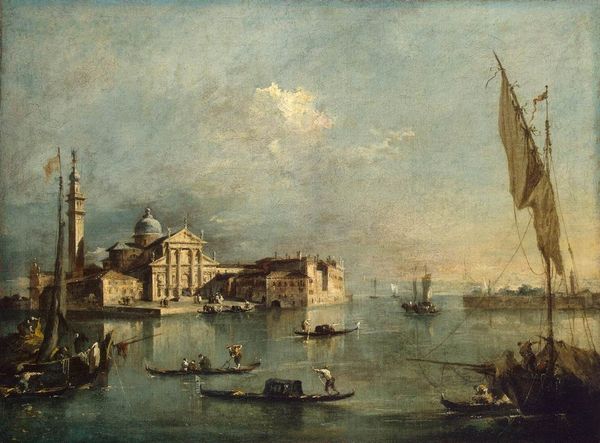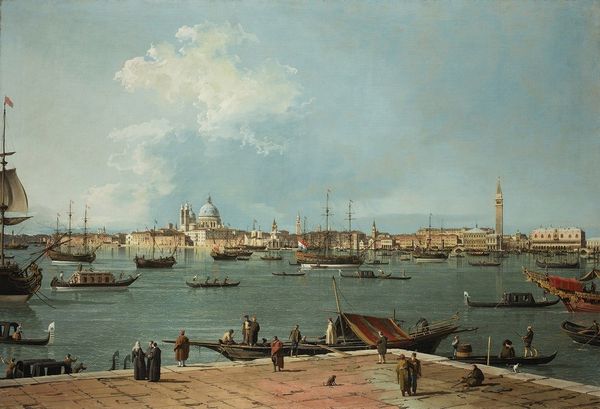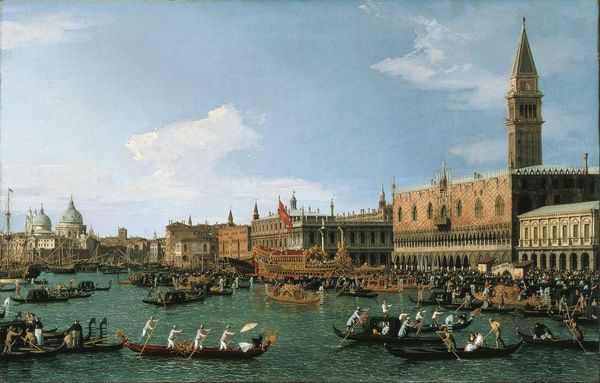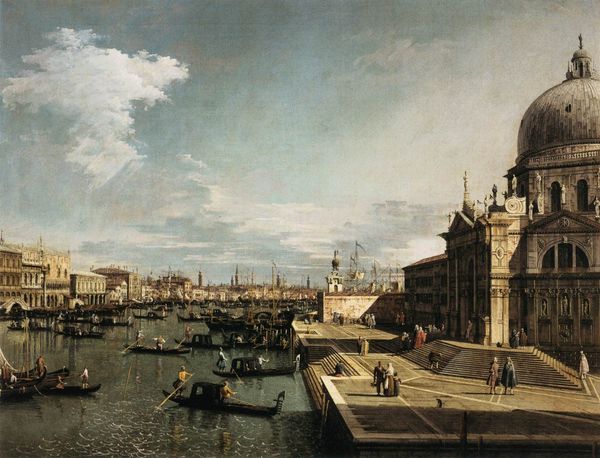
painting, oil-paint
#
venetian-painting
#
baroque
#
painting
#
oil-paint
#
landscape
#
perspective
#
cityscape
#
genre-painting
Copyright: Public Domain: Artvee
Curator: Here we have Canaletto's "Bacino di San Marco, Venice," painted around 1738 using oil paint. Look at that perspective. What is your initial take? Editor: Immediately, I notice a sense of contained energy, a buzz muted by distance and the sheer breadth of the composition. Curator: Precisely. Notice how Canaletto employs a wide angle, capturing an expansive panorama of the Venetian harbor, yet keeps the eye moving from the boats in the center to the architectural details. This controlled sweep underscores Baroque principles of design while documenting the topography of the area. Editor: But the supposed neutrality of topography flattens any sort of lived experience of Venetians—who are predominantly absent. It reads as a scene made for the consumption of wealthy tourists. Think about the historical context. Venice was a center of commerce, built through trade routes and exploitative systems. Canaletto neatly elides this. Curator: While that socio-political context is useful to consider, I suggest we look at Canaletto’s use of light. The painting masterfully captures the shimmering quality of the Venetian light as it reflects off the water. Look at the tonal variety in the sky alone, which amplifies the realism here. Editor: But “realism” isn’t neutral either, right? These landscape scenes presented an aspirational vision of Venice—a picturesque version ready-made for colonial European fantasies about the area. Curator: His use of perspective draws our eyes deep into the canvas and shows a precise depiction of architectural features, and one could see how that plays into Baroque notions of illusion and the real, the artificiality of constructed viewing positions. Editor: Right, this artifice of this seemingly panoramic view reinforces an external gaze on a lived space. Venice's complex history and identity are almost submerged. The details fade and its problems obscured under what becomes ultimately an appealing facade for tourism. Curator: Your reading of this image is provocative. Considering this work through a social lens and discussing its representation and construction of landscape can reveal more complex and critical engagements. Editor: It encourages a closer look beyond the aesthetic appeal of this gorgeous Venetian panorama, toward its layered, albeit silent, narrative about Venice and the market for its image.
Comments
No comments
Be the first to comment and join the conversation on the ultimate creative platform.
